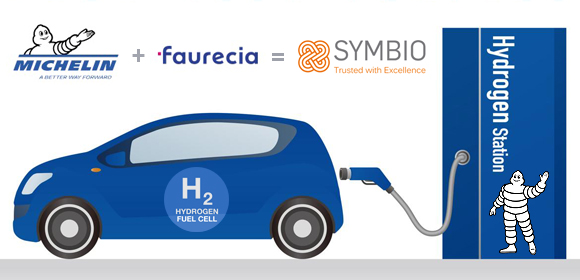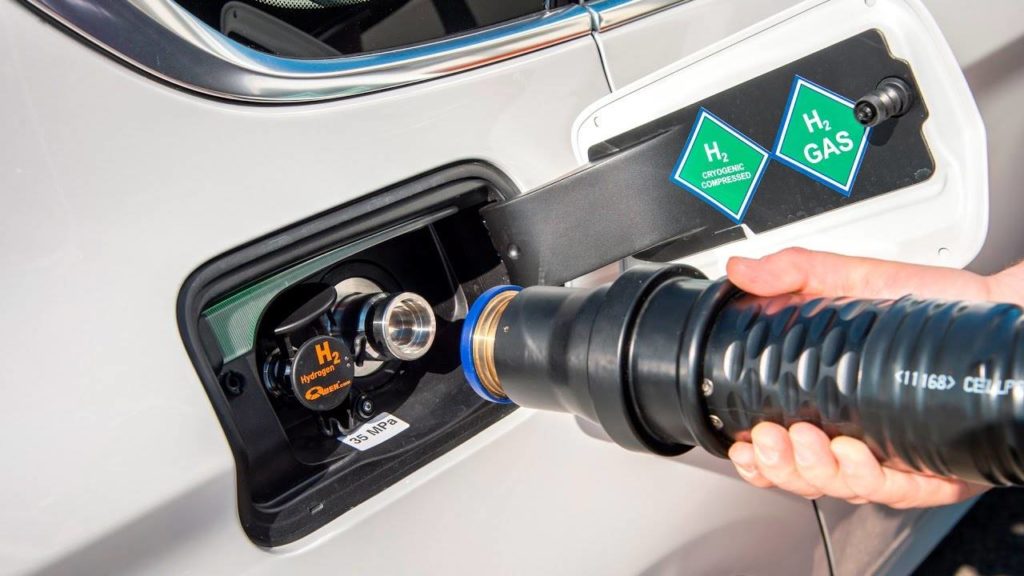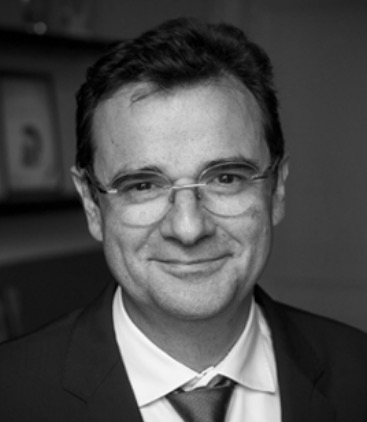Michelin and Faurecia to Invest 140 Million Euros in Symbio Hydrogen Mobility Joint Venture

When Michelin took over the bankrupt Citroën company in 1935, they believed the effort the company had put into engineering the Traction Avant poised it for a profitable future. They were correct, by 1937 Citroën had ramped up production and was making money. These days, Michelin is intrigued by the means in which the auto industry will switch away from fossil fuels and has decided to invest, along with Faurecia, a French global automotive supplier, 140 million euros in Symbio, a hydrogen mobility joint venture company.
They believe that with demands for greener mobility solutions increasing, hydrogen technology will play a key role in the mass development of electric vehicles to reach zero-emission mobility in the future. Michelin also claims that hydrogen fuel cells are particularly suitable for intensive use and for those who need greater autonomy. It further says they are perfectly complementary to battery technology.

Once equipped with hydrogen fuel cells, vehicles provide enhanced ease of use (refill in three minutes, autonomy twice that of their battery equivalents, etc.) while remaining “zero emissions”. There are several hundred of these vehicles – for the most part, light utility vehicles such as the Renault Kangoo ZE H2 – on the roads in France and across Europe. Created in 2010, Symbio has been a subsidiary of the Michelin Group since February 2019.
Symbio designs hydrogen fuel cell kits that can be incorporated into various types of electric vehicles (utility vehicles, vans, buses, heavy-goods vehicles, etc.) and are associated with a range of services (remote vehicle repairs and fleet management, etc.). Commenting on the joint venture, Fabio Ferrari, CEO, Symbio, said, “With this in mind, we decided, along with the Michelin development teams, to speed things up. The market was there. It was time to develop a Joint-Venture with a partner.”

Faurecia is headquartered in Nanterre, in the western suburbs of Paris. In 2018 it was the 9th largest international automotive parts manufacturer in the world and #1 for vehicle interiors and emission control technology. One in three automobiles is equipped by Faurecia. It designs and manufactures seats, exhaust systems, interior systems and decorative aspects of a vehicle.
For those of us familiar with the history of Citroën and Michelin’s involvement, over the years, it may seem odd that hydrogen innovation isn’t coming from Citroën or any other division of PSA. PSA has indicated that they believe all-electric vehicles are the next metric and are striving to have the Group’s entire passenger car and LCV (light commercial vehicle) range electrified by 2025.
Other companies, BMW and Toyota to name two major players, believe that a hybrid approach is more advantageous whereby one is not stuck looking for a charging station that may not be close at hand, or waiting in cue for one behind other electric vehicles Their approach to eliminating petrol engines in their hybrids is to use hydrogen fuel cells on-board the vehicle to charge the batteries and at times power the electric drivetrain directly.
Hydrogen got a bad wrap with the LZ 129 Hindenburg Zeppelin crash on May 6, 1937, killing 36 people. But if you look carefully at the film of the accident, it could have been much worse. The burning hydrogen went upwards. Of the 36 passengers and 61 crew aboard, only 13 passengers and 22 crew died, as well as one member of the ground crew.

Hydrogen fuel is a zero-emission fuel burned with oxygen. It can be used in fuel cells or internal combustion engines. Storing hydrogen in automobiles has its challenges, particularly since as a gas it is preferable to keep it in a highly compressed and ideally in a liquid state for maximum efficiency. Presumably, Symbio is also working with companies on storage solutions and delivery infrastructure.
How a hydrogen fuel cell works is well explained here: https://www.hydrogenics.com/technology-resources/hydrogen-technology/fuel-cells/
